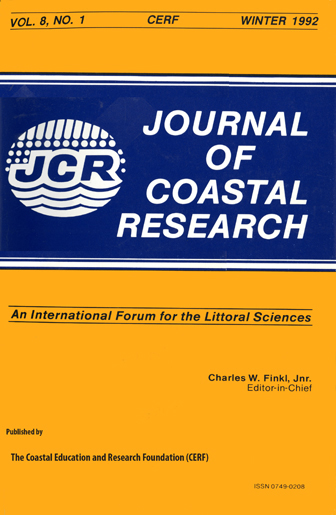Site Specific Controls on Wind and Wave Processes and Beach Mobility on Estuarine Beaches in New Jersey, U.S.A.
Keywords:
Fetch distance, human modification, low tide terrace, wave refractionAbstract
Data for eight low-energy meso-tidal sand beaches in developed communities on Raritan Bay and Delaware Bay estuaries in New Jersey. U.S.A., are compared to identify the influence of shoreline orientation, sheltering by adjacent headlands, slope and width of the low tide terrace, and human modification on beach processes and responses. Data on these controls, derived from charts and air photos, are used to explain statistically significant similarities and differences in wind and wave characteristics and beach mobility derived from field investigations.
Wind conditions were similar on both bays, but processes and responses differed between sites. Shoreline orientation affects the degree to which refracted ocean waves alter the incident wave field, and sites farther from the ocean may have more conspicuous ocean wave influences than sites closer to the ocean. Site specific differences in the width and slope of the low tide terrace have pronounced effects on wave height and mobility of the upper foreshore. Sheltering by natural headlands appears to be less effective than human controls. Compartmentalization of 8 beach by structures can increase or decrease beach mobility, depending on position relative to the ends of a longshore drift compartment. Localized human impacts can have conspicuous effects on low-energy estuarine beaches that undergo limited profile change under natural conditions.


